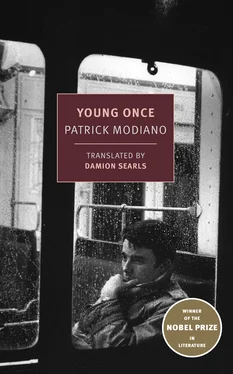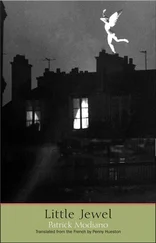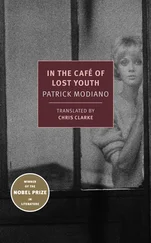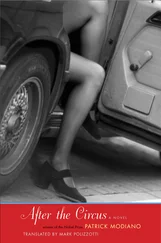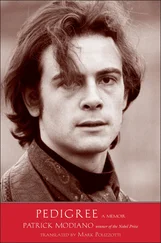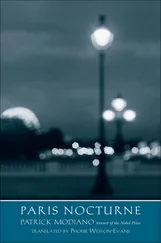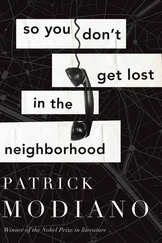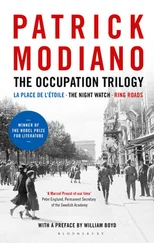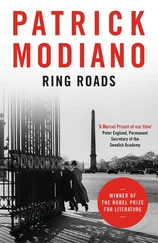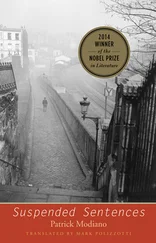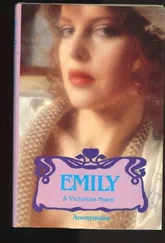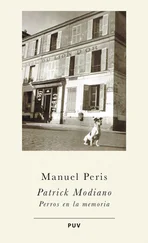Above the stables there was a kind of dovecote covered with ivy.
“I have a room up there. Do you want to see it?”
They climbed a tiny spiral staircase. Nicole Haas opened the door to a little room wallpapered with toile de Jouy, with a narrow bed covered with pale blue velvet.
“I come here a lot. It’s the only place where I feel good. I’m near the horses.”
She opened the window halfway, then lay down on the bed.
“I always wondered why you work with Roland.”
“Just one of those things,” Louis said.
He sat down on the floor with his back against the side of the bed.
“And what are you going to do when he leaves?”
“I don’t know,” Louis said. “What about you?”
“Whether it’s him or someone else, what matters is that I find someone who will let me feed my horses.”
She pressed her kind and stubborn face into the hollow of Louis’s shoulder.
“He wants to take me to Argentina. What am I supposed to do in Argentina?”
He felt her breath on his neck.
“Did you know that Roland is a murderer? That’s right, a murderer… There were articles in the paper. Why am I going to Argentina with a murderer? You don’t seem to understand what I’m saying, Louis. Me, all alone down there with that killer…”
How long did they stay there in that room, on the narrow bed? She had a scar on her shoulder, in the shape of a star, that Louis couldn’t help but run his lips over. A souvenir of a fall from a horse. It got dark. They could hear the clattering of hooves, a whinny, and the high-pitched voice of the marquis giving orders at more and more distant intervals, like a motif on a flute, clear and desolate, returning again and again.
WE WERE slipping toward summer. Bejardy had less and less work for Louis, who spent most of his days with Odile. They met Brossier and Jacqueline Boivin at Cité Universitaire sometimes, and picnicked on the great lawn or strolled to Parc Montsouris. More often, Mary came to Montmartre. She had discovered a little place, “lease for sale,” for her “Couture Fashion” boutique.
At night, they walked slowly along the median to place Blanche and Pigalle. They went to see Jordan, who had managed to get a gig in a cabaret on rue des Martyrs and who always wore the stage dress Odile and Mary had made. Or else they simply went up rue Caulaincourt to avenue Junot and then back the way they had come. The lights were on all night in the entrance to the Hotel Rome on rue Caulaincourt, like a lookout post.
On avenue Junot, they saw a big man walking an Irish setter on a leash, and nodded a greeting. The dog seemed to feel a spontaneous affection for Odile and Louis.
That night, on the terrace of the Dream, this same man was sitting at a table next to theirs and his Irish setter had put its chin on Odile’s knee.
“My dog isn’t bothering you, is he, mademoiselle? If he is, please don’t hesitate to tell him.”
He hardly moved his lips, but his bass voice carried far.
“No, he’s not bothering me at all,” Odile said, petting the dog.
“Do you live in the neighborhood?”
“Yes,” Louis said. “A little farther down, on this street.”
“What building?”
“Eighteen bis.”
“Which floor?”
Louis hesitated a moment before answering. “The sixth.”
“No, impossible! In the studio?”
“Yes.”
“May I?”
He moved over to join Odile and Louis, clearly deeply moved. His short gray hair, his puffy face, his powerful brow, and his build, emphasized by his velvet courduroy jacket, made him look like a former boxer. He gave off a smell of old leather and cold ashes.
“That used to be my studio. Can you believe it?”
There was something about him, although they couldn’t quite put their finger on what, that contradicted the big, brutal features of his face.
“You have to admit, sometimes very strange coincidences happen in life…”
“Are you a painter?” Odile asked, continuing to pet the dog.
“I was, yes. When I lived in the studio. I drew covers for music-hall programs. But I’m not going to tell you my life story. By the way, did you keep the bar and the fan?”
“Yes,” Louis said.
“The Chinese drawings are mine.”
He looked at Odile and Louis with his sensitive eyes, head raised, a slightly ironic smile on his lips.
“I haven’t introduced myself. Bauer. Let me invite you over to my place for a plum schnaps, to celebrate this strange coincidence. It’s right nearby.”
His voice was so commanding that they truly had no choice but to accept.
On avenue Junot, they walked through the entrance arch of one those little buildings built in the thirties, with bay windows and arcades. Bauer and the dog preceded them.
“Would you mind keeping as quiet as you can?” he said in his deep voice. “My mother is sleeping.”
They walked down the hall on tiptoe and into an enormous room, either a living room or dining room. Bauer quietly shut the door behind them.
“Now we can talk. My mother won’t hear anything while we’re in here.”
The room was furnished with a sideboard, a table, and rustic-style walnut-colored chairs. A Tyrolean pendulum clock on the wall between the two windows, an armchair upholstered in cream-colored silk, and some roses in a vase on the shelf of the sideboard made the decor a little more cheerful. Louis noticed a photograph, taken into the light, of a man leaning against the mast of a sailboat, his silhouette sharp against the background of a glittering sea.
“Alain Gerbault… I knew him well when I was seventeen,” Bauer said.
That photo gave a nostalgic charm to the room, like a breath of fresh air from the open sea or the sound of a Hawaiian ukelele.
“Have a seat. Please, sit down.”
The table was covered with an oilskin cloth. The dog climbed up onto a chair next to Odile and stayed there, alert, not letting Bauer out of his sight while he poured some plum schnaps into champagne flutes for them.
“Your dog looks like he wants some too!” Odile said.
Bauer laughed. “All right. Why not? A glass for the dog.”
He filled another flute right to the rim and pushed it toward the suspicious dog. Then he took a large green leather album out of one of the sideboard drawers.
“Here you go. Souvenirs from back when I lived in the studio. Where you live now.”
Louis had opened the album and Bauer stayed standing behind him and Odile and the dog. The first two pages had a single photograph each, protected by a sheet of clear plastic. Two men with regular features, one dark and the other blond. The photos were from the thirties.
“Pierre Meyer and van Duren. Two music-hall artists,” Bauer said. “The two men I admired more than anyone else in my life.”
“Why?” Odile asked.
“Because they were beautiful,” Bauer said in a peremptory tone. “They committed suicide, both of them. Alain Gerbault too, in a way.”
Louis turned the album’s pages. There were covers of various music-hall programs signed “Bauer” in a large, slashing hand.
“You didn’t know my mother, by any chance, did you?” Louis asked. “She worked at the Tabarin.”
“Your mother? No, my boy. I didn’t know anyone at the Tabarin. I usually worked for Mistinguett.”
There were photos on the following pages of young people, with their names and dates getting closer and closer to the present. The generations passed, one after the other, and in the middle of all these young people, each more dazzling than the last, was an older man with an ordinary, fat face, sinuous lips, and wrinkles around his eyes.
“That’s Tonton, from Liberty’s.”
The harsh light from the hanging lamp was reflected as gleams from the sheets of plastic covering all the mementos. The dog seemed interested in the album, too: He sniffed and snorted from time to time, and his breath clouded up the photographs whenever Louis didn’t turn the page in time. Odile leaned her head on Louis’s shoulder to see better.
Читать дальше
